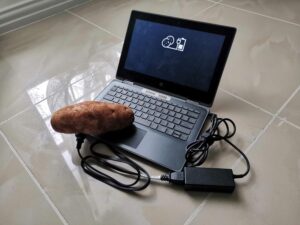t might sound like a joke, but the idea of charging a laptop with a potato has intrigued many curious minds. While potatoes can generate a small amount of electrical energy, the reality of using them to charge a high-powered device like a laptop is more complicated.
The Science Behind Potato Power
Potatoes contain electrolytes that, when combined with zinc and copper electrodes, create a chemical reaction producing a small electric current. This process is known as an electrochemical cell, similar to a simple battery.
How It Works
- Insert a copper and zinc electrode into the potato.
- The acidic properties of the potato help generate a small voltage.
- Multiple potatoes can be connected in series to increase the voltage.
However, the power output from a single potato is very low—typically around 0.8 to 1.2 volts with minimal current.
Can It Charge a Laptop?
Laptops require significantly more power than what a few potatoes can provide. A standard laptop charger outputs around 19 volts and several amps of current, which is far beyond the capacity of potato-generated power.
In theory, if you had thousands of potatoes wired together, you might generate enough energy, but this isn’t a practical or efficient solution.
Fun Science Experiments
While you can’t realistically charge your laptop with a potato, you can try these fun experiments:
- Powering a small LED light.
- Running a basic digital clock.
- Learning about chemical reactions and energy transfer.
Conclusion
Charging a laptop with a potato isn’t feasible due to the low power output. However, potatoes can serve as an educational tool to explore the principles of electricity and renewable energy sources.
Need Reliable Charging Solutions?
If you’re looking for practical ways to keep your devices powered, visit Psero.com for expert advice and high-quality charging accessories.

